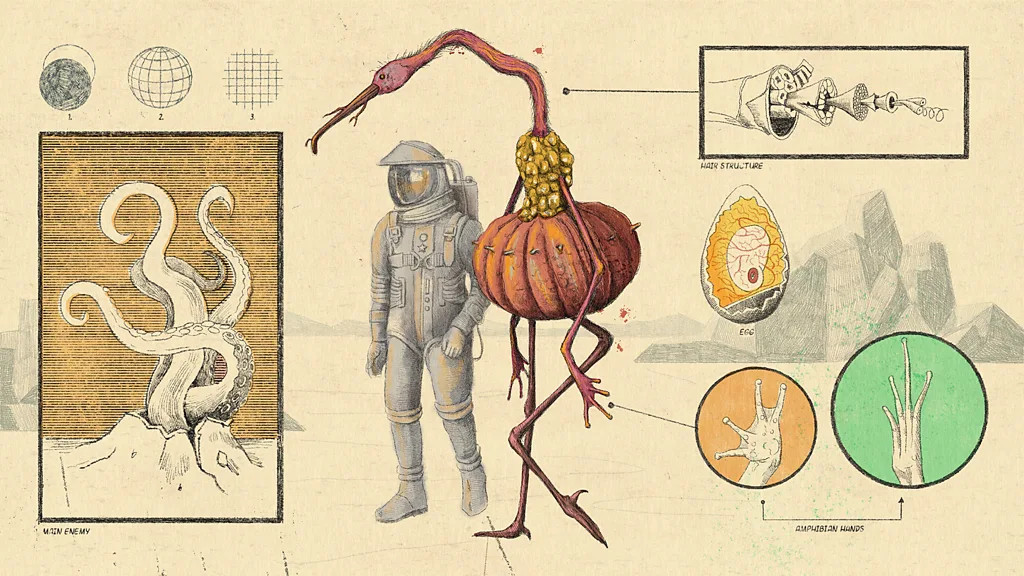Review: The Science Fiction Hall of Fame, Volume One
Speculative fiction from the era before the moon landing and the exploration of the solar system occupies a special place in my heart.
Writers from the 1930s, 1940s, and 1950s still dared to dream of life on Mars. Their imaginations had not yet been influenced and constrained by the slow progress of real-world space exploration, or by particular visions of the future like those popularized by Star Trek or The Expanse.
The Science Fiction Hall of Fame, Volume One was published in 1970 and contains a total of 26 stories first published between 1934 and 1963. The book includes 15 stories selected by a vote of the Science Fiction and Fantasy Writers of America and 11 stories picked by editor Robert Silverberg.
One cannot pick up such an old collection in 2024 without noticing the all-white and almost all-male selection of writers. The stories themselves, too, reflect the prejudices of their era. In “Helen O’Loy”, the perfect robot wife cooks, cleans, and adulates her husband; in “Twilight”, a time traveler from the future remarks on the wonderful music produced by “semicivilized peoples”.
Nevertheless, this collection includes some stories that are well worth your time. There are the classics that have inspired countless adaptations and imitations: “Microscosmic God” about a scientist who creates a civilization; “It’s a Good Life” about an omnipotent child; “Flowers for Algernon” about an intellectually disabled man who is turned into a genius by way of surgery.

The alien Tweel, depicted here by artist Emmanuel Lafont, is one of the unforgettable characters from “A Martian Odyssey” by Stanley G. Weinbaum. (Credit: Emmanuel Lafont. Fair use.)
The (at least to me) lesser known gems include “Mimsy Were the Borogoves” about children’s toys from the future, “Scanners Live in Vain” about humans bio-engineered to survive space travel, and “Surface Tension” about a civilization of tiny aquatic humanoids and their microbial helpers.
“Scanners Live in Vain” takes an imaginative leap that was still barely plausible in 1953: the idea that space travel causes conscious human beings to suffer and die due to an unexplained condition called “The Great Pain of Space”. Therefore, space travelers have to hibernate under the supervision of caretakers without the ability to feel.
It’s the kind of story unlikely to be written today, but it makes for a fascinating “what if” now. What if space travel had been like that?
Keeping its biases in mind, “The Science Fiction Hall of Fame” remains a useful starting point for exploring this era of speculative fiction. Except Silverberg, all the authors have passed away as of this writing. Their influence on how we think about the future — and the past — endures.
The full list of stories:
- “A Martian Odyssey” by Stanley G. Weinbaum
- “Twilight” by John W. Campbell
- “Helen O’Loy” by Lester del Rey
- “The Roads Must Roll” by Robert A. Heinlein
- “Microcosmic God” by Theodore Sturgeon
- “Nightfall” by Isaac Asimov
- “The Weapon Shop” by A. E. van Vogt
- “Mimsy Were the Borogoves” by Lewis Padgett
- “Huddling Place” by Clifford D. Simak
- “Arena” by Fredric Brown
- “First Contact” by Murray Leinster
- “That Only a Mother” by Judith Merril
- “Scanners Live in Vain” by Cordwainer Smith
- “Mars is Heaven!” by Ray Bradbury
- “The Little Black Bag” by C. M. Kornbluth
- “Born of Man and Woman” by Richard Matheson
- “Coming Attraction” by Fritz Leiber
- “The Quest for Saint Aquin” by Anthony Boucher
- “Surface Tension” by James Blish
- “The Nine Billion Names of God” by Arthur C. Clarke
- “It’s a Good Life” by Jerome Bixby
- “The Cold Equations” by Tom Godwin
- “Fondly Fahrenheit” by Alfred Bester
- “The Country of the Kind” by Damon Knight
- “Flowers for Algernon” by Daniel Keyes
- “A Rose for Ecclesiastes” by Roger Zelazny